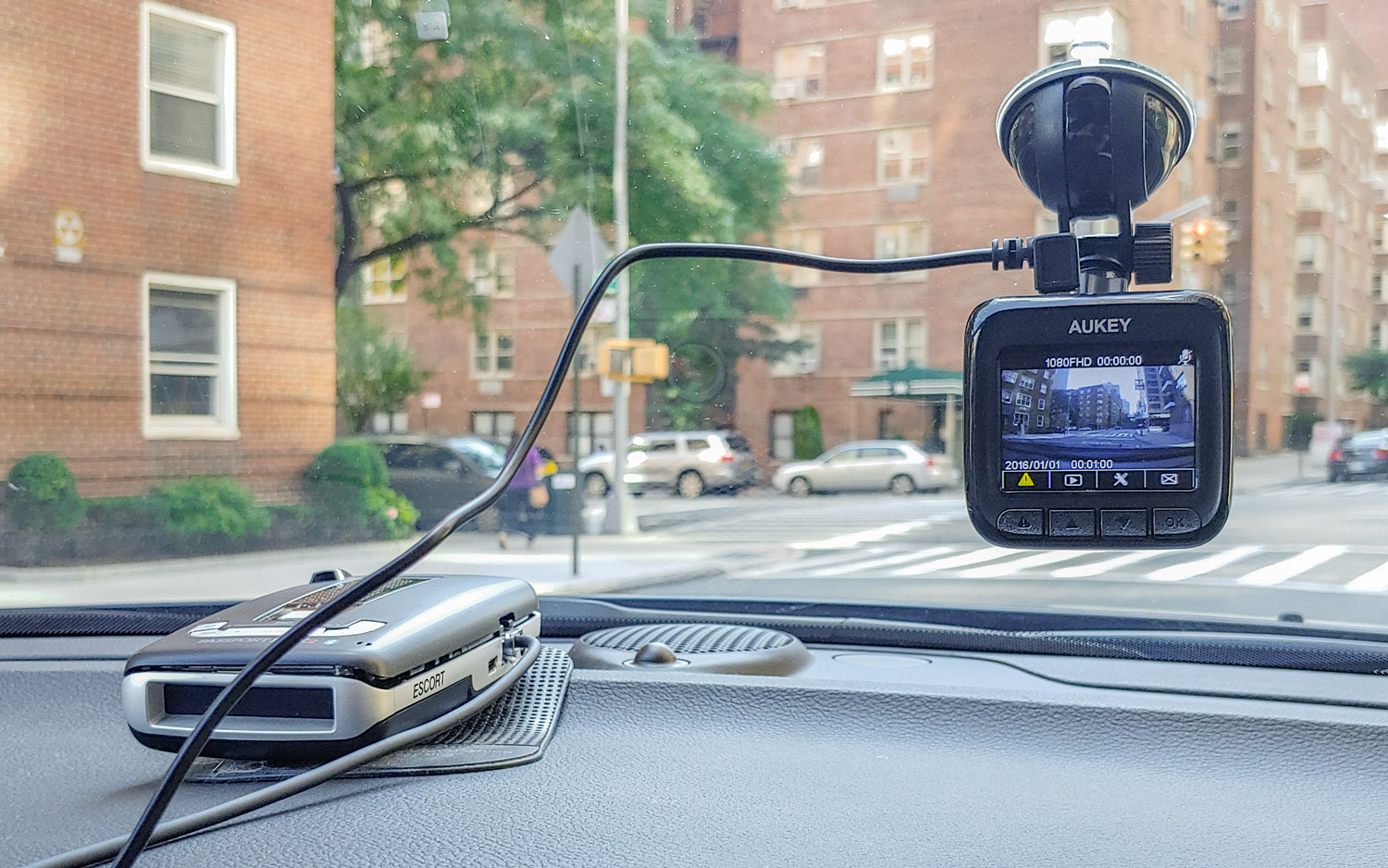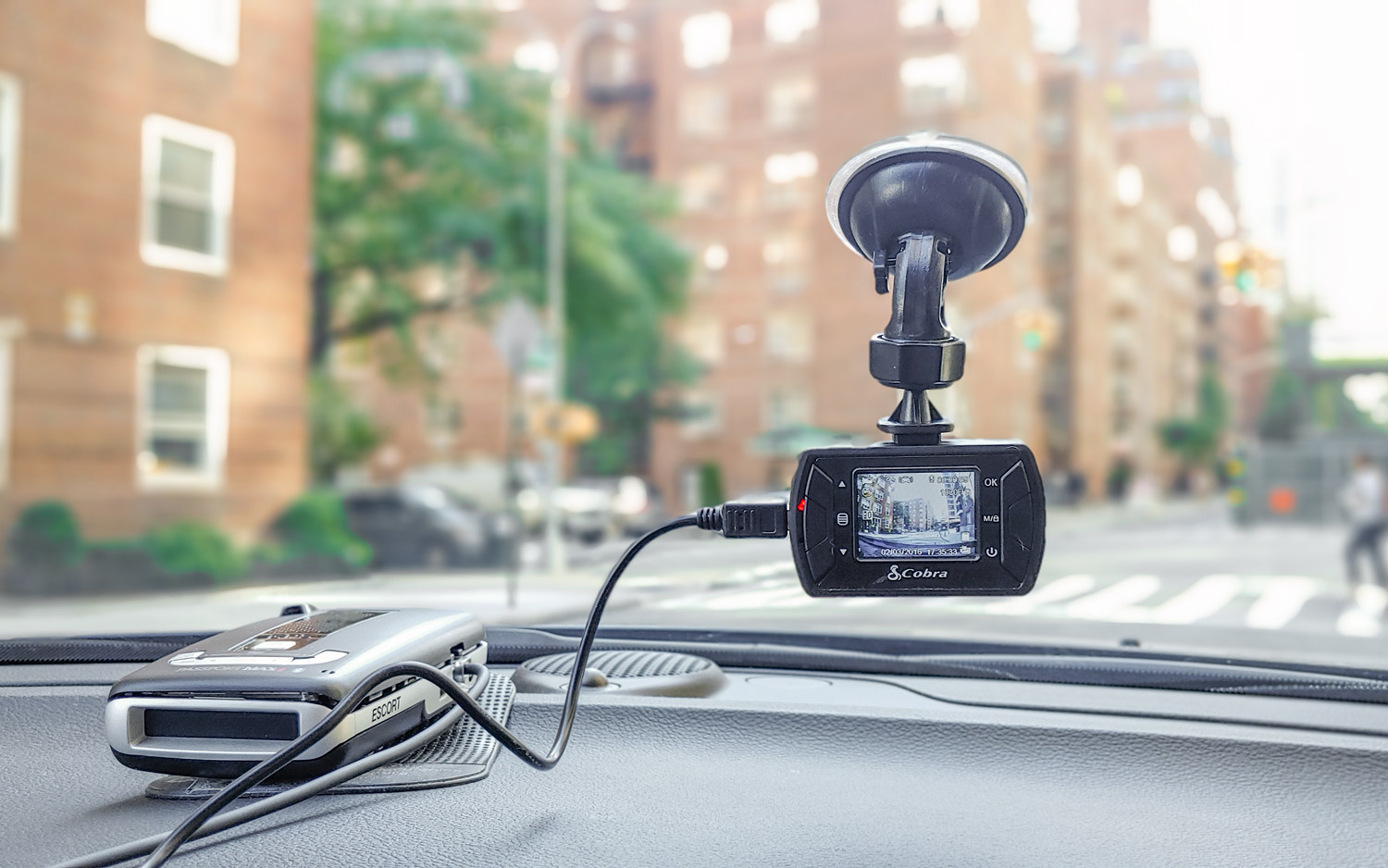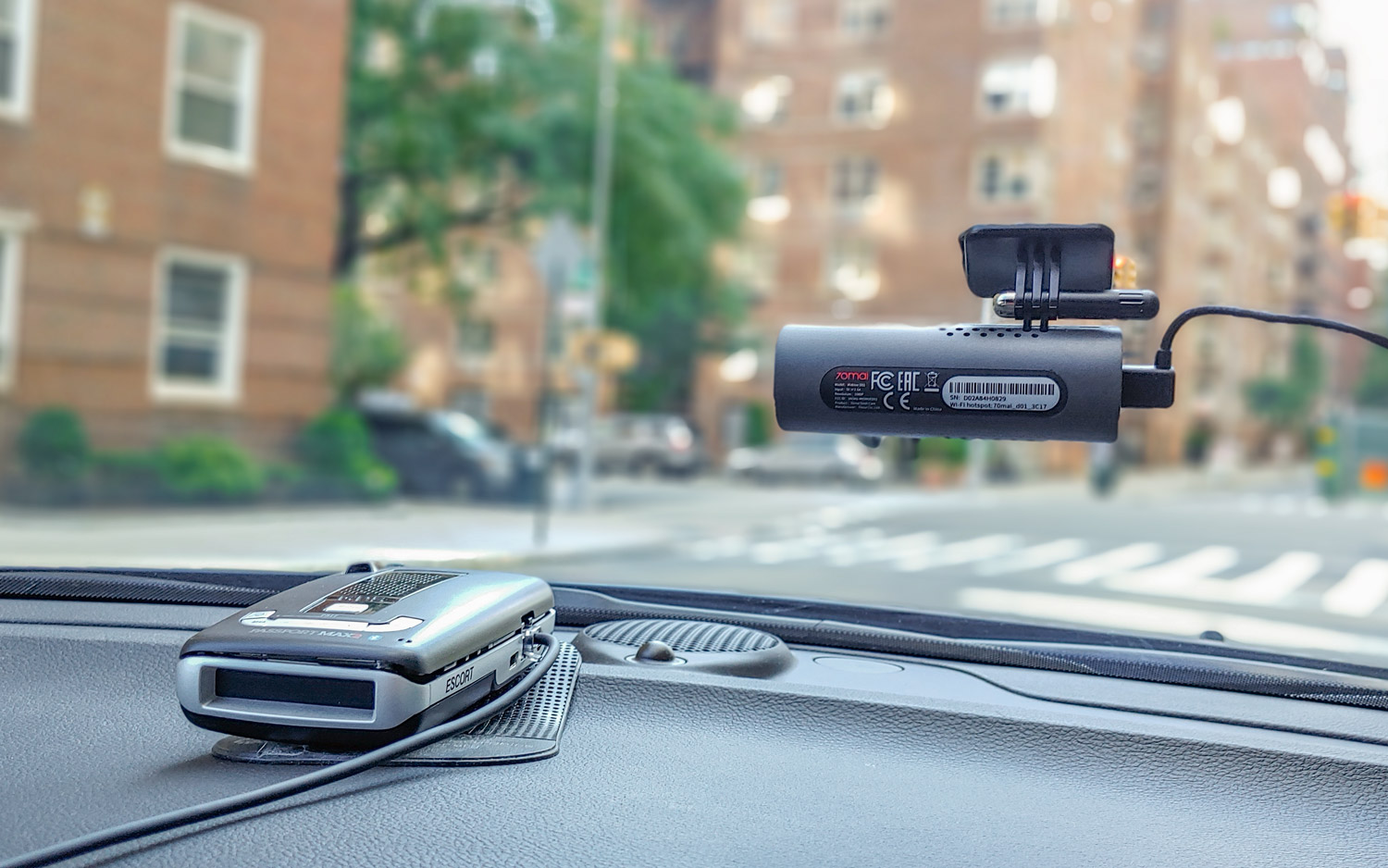Best dash cams 2021: Top picks under $100
The best dash cams come in handy for a variety of uses, ranging from accident insurance protection to capturing the best parts of your road trip. So what’s the best choice for you?
To find out, Tom’s Guide bought 11 models that all cost $100 or less, and took them on the road. Over more than 500 miles, night and day, rain and shine, we tested these dash cams on city, highway and country roads to see how they performed.
Overall, the Magellan MiVue 420 is an excellent choice to bring older cars up to speed with added safety features and good-quality video recordings. For the truly budget conscious, the Aukey Dashboard Camera DR01 is a great option.
We’ve since tested more expensive dash cams like the $229 Garmin Dash Cam 57 and the $169 Vantrue N2 Pro. But if you’re setting on not spending more than $100, here’s how the best dash cams at that price stack up.
Boasting more features than any other model we tested, Magellan’s MiVue 420 doesn’t just record video. It also offers a slew of safety features for drivers. Magellan’s MiVue has a built-in touch-screen display, suction-cup mount, 12-volt adapter and an 8GB microSD card (generous in this price range). It records video in 1296p — which the company calls super HD — with a 140-degree lens.
In practice, the continuous video recordings were some of the best we saw, allowing us to read license plates even in nighttime recordings. The video not only includes time and date (as others do) but also your location and speed, thanks to built-in GPS.
This is where the MiVue really excels. It offers several safety alerts, including lane-departure warning chimes, forward- collision warnings, excessive speed alerts and red-light-camera warnings. Best of all, the MiVue’s larger-than-average 2.7-inch screen means that the alerts are clearly visible — without becoming too distracting.

One of the best of the lower-priced dashcams, the 1080p Aukey DR01 has several features that make installation easier than most—and it delivers an above-average picture. The Aukey DR01 has a small but adequate 2-inch LCD screen and a 170-degree wide-angle lens.
There’s no supplied microSD card, and the power cord blocks the memory slot, making it awkward to remove the card whenever you want to download a video. But Aukey DR01 redeems itself with its touted low-light sensitivity. We did, indeed, find it was better than the competition in this regard, delivering a solid video picture, even on the highway on a dark and stormy night.
Aukey makes a variety of car accessories, so naturally it includes all you’ll need here: there’s a suction-cup mount, as well as a 3M sticker mount for more permanent positioning; cable clips are included to tuck the power cable out of sight. Finally, the USB cable uses a detachable 12-volt adapter with a second USB port so you can power another device like a phone or radar detector at the same time.

Solid construction and excellent support are the hallmarks of the Anker Roav Dashcam C1. A well-organized manual will help neophytes with installation questions, and the 1080p camera’s 2.4-inch LCD makes it easy to position and set up. A dual-port USB charger means it can also share a 12-volt port. The only misstep: a difficult semipermanent adhesive sticker mount.
The Roav’s 145-degree video was good enough to cover four lanes of highway traffic, and it was clear enough for most purposes, although we still couldn’t read license-plate numbers at night.
The Roav dashcam includes the usual array of continuous recording features, plus a small built-in 470 mAh battery so that it can record mishaps even when your car is stopped and parked. (In our anecdotal tests, the battery lasted for several days.) Owners can also choose to download videos to a Wi-Fi-connected smartphone via the Roav app rather than having to pop out the memory card. Buyers should note, however, that it doesn’t include a memory card, so add that to your budget.

Cobra is best-known for its radar detectors and CB radios (yes, they still make them), so the company’s got plenty of experience making accessories for drivers. It pays off well here with the competitively priced IP200. This windshield-mounted model uses a suction-cup attachment and dedicated 12-volt adapter for easy installation.
One of the more compact dash cams available, the IP200 has a tiny, 1.5-inch display but its on-screen menus are easy to understand and navigate using buttons on the side of the screen.
Cobra also thoughtfully includes a 4GB microSD card — one of the few models to do so —so you can start using it right away. With a 120-degree lens, the Cobra IP200 continuously records video and includes a shock-and-motion sensor, to automatically record break-ins and accidents. The dash cam’s 1080p video quality was above-average for this group, even balancing light and dark areas (such as going through a covered bridge) with aplomb.

Thinkware’s Dash Cam F50 promises to be a more elegant solution than the competition, but what you gain in style you tend to lose in practical features. The barrel-shaped camera is not much bigger than a roll of Life Savers, so it does not include an LCD display. That can make initial placement a little tricky, because you have to juggle it using an associated smartphone app.
The dashcam comes with a flat, semipermanent adhesive mount that’s less than ideal; it has a vertical adjustment only on the attachment, so it takes some work finding a level horizontal position on the windshield.
On the other hand, there’s a welcome 8GB microSD card, and the app includes the option of setting several safety alerts, including red-light-camera locations and speed warnings. However, an additional $34 external GPS antenna is required to add these functions. With spoken alerts, the Thinkware dashcam is subtler than most; it even reminds you it’s recording video when you turn the ignition. The clarity of its 1080p video was average and the Thinkware’s 130-degree view delivered a slightly distorted fish-eye view. (Note: This model is similar in shape and approach to the 70mai Dashcam.)

A near twin to the Thinkware F50, the 70mai Dash Cam is a cheaper — if somewhat less friendly — alternative. The tubular camera keeps a low profile by eschewing an LCD screen, relying instead on an associated smartphone app and Wi-Fi connection for setup and operation. It also records 1080p video and uses a semipermanent flat, adhesive mount, making installation awkward, because once it’s stuck to your windshield, it offers minimal adjustments.
To keep the price down, there’s no memory card, and the microSD slot placement means you have to unplug it whenever you want to insert or withdraw a card.
Unlike most of the dashcams we tested, the 70mai uses a standard USB cable with a detachable 12-volt adapter, so it can be plugged into any USB power source rather than just a cigarette-lighter plug. To facilitate hands-off operation, the 70mai supports a half dozen voice commands, including “take picture,” “record video” and “record without sound.” Like the Thinkware model, a voice tells you whenever recording starts.
We found the video quality acceptable but at night license plates were illegible, and the camera did not do well in low-light conditions. Several features were not ready for prime time, like the Android app’s odd English instructions, which included “When Wi-Fi turns on, the indicator is breathing state.”

If you’re never tried a dashcam, the Armor All ADC2 is a good starter kit, although better video quality recordings can be found elsewhere. The very inexpensive ADC2 includes an easy-to-use suction-cup mount, a power cable and a 4GB microSD card, enough to start recording as soon as you get it. A 2.4-inch LCD screen confirms that you’re pointed in the right direction and that you’re recording, although the screen was so dim that we didn’t notice that we had the camera pointed up at the trees for miles.
Furthermore, the ADC2’s 720p video quality is rather poor. It provides only a 90-degree viewing range, delivering the narrowest perspective among the dashcams we tested. And the inferior picture resolution produced a rough and pixelated image, making it all but impossible to read street signs and license plates.

One of the least expensive cameras in our roundup, the Pruveeo F5 is an against-the-windshield, all-in-one design. The 1080p camera with a 140-degree lens mounts directly on the glass using a semipermanent double-sided sticker. Unfortunately, the camera lens itself can be rotated only within a narrow range once it’s mounted, making it difficult to optimize the view.
Like several other models, it does not include a microSD memory card, but it does perform automatic continuous recording and will save recordings whenever there’s a “bump” or other unusual event noted by its motion sensors. Unfortunately, the F5’s video quality was mediocre, with a tendency to become overexposed in broad daylight. The video also demonstrated a lack of detail, making it hard to make out license-plate numbers, day or night.

The Rexing V1 is an all-in-one dashcam design that mounts directly to the windshield with an adhesive mount. However, this on-glass approach limits your window-placement options. The camera records video with a very wide 170-degree perspective in 1080p. It includes continuous- loop recording, crash sensing and time stamps. The camera also includes a 2.4-inch display, but we found its poor viewing angles made it all but impossible to see what was being recorded.
The Rexing V1 does make an effort to aid inexperienced users by including an excellent manual and a plastic pry tool to help you tuck the power cable along the headliner, plus half a dozen clips to secure the cable elsewhere. Video recordings were of better-than-average quality, even in low-light conditions. But the poor LCD screen and lack of included memory card make this expensive dashcam a one to skip.
What to look for in a dash cam
None of the budget dashcams we reviewed offer 4K video or broadcast quality sound, but you should expect clear full-HD video from the top models. And all require power but come with the necessary cables and mounts to hook up to the old 12-volt cigarette-lighter plug in the car.
Some of these dashcams have LCD screens for easy monitoring, while other models do not. A couple models require a smartphone app; although most do not. Finally, only a few come with a microSD memory card, so in most cases you’ll have to purchase your own. For our tests, when the camera did not include memory we used a Kingston 64GB XC microSD card ($25 to $30).
For all the latest Technology News Click Here
For the latest news and updates, follow us on Google News.
